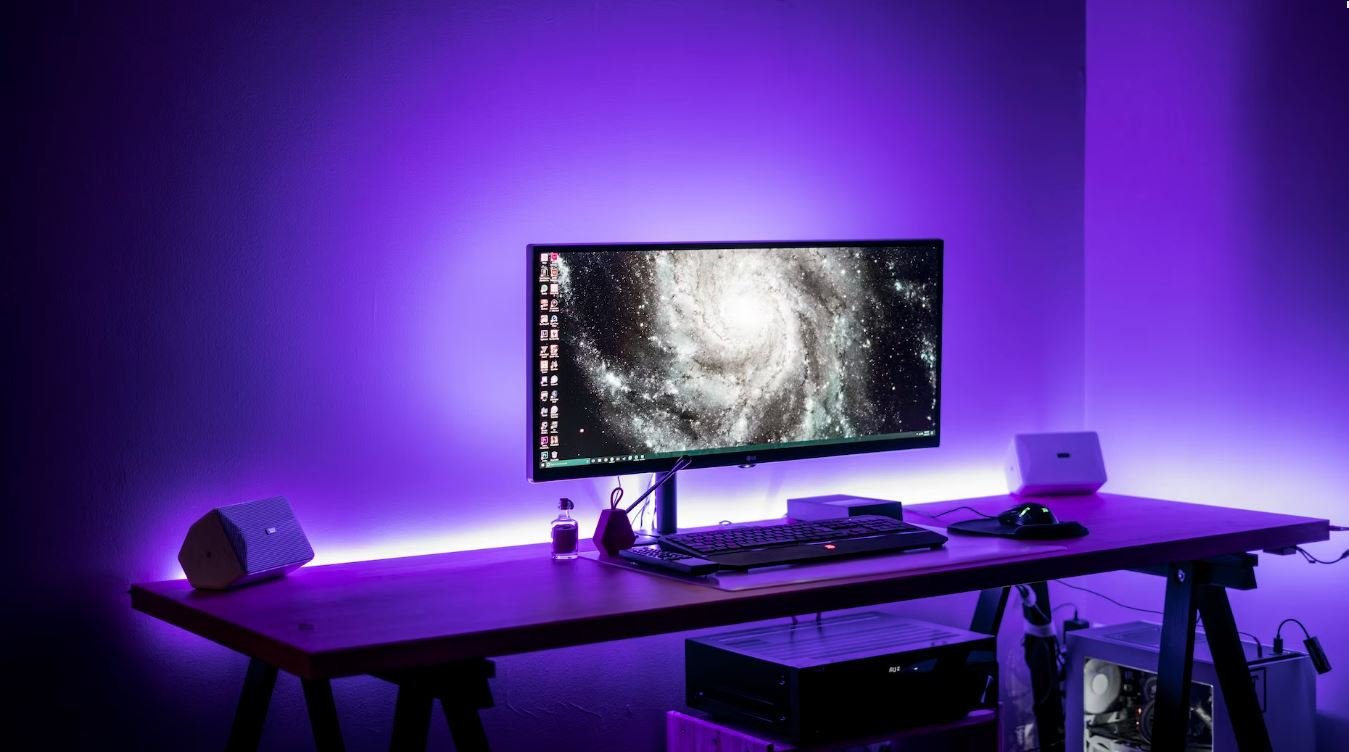Output Device of Data
Output devices are essential components in a computer system that enable the display or printing of data or information. They convert digital data into a format that is easily understandable to humans. Here, we will explore the different types of output devices and how they play a crucial role in transferring information from computers to users.
Key Takeaways
- Output devices convert digital data into human-readable or perceptible formats.
- Common output devices include monitors, printers, speakers, and headphones.
- Each output device serves a specific purpose, such as visualizing data, generating hard copies, or providing auditory information.
Types of Output Devices
There are several types of output devices available, each serving a different purpose in delivering data. Monitors, also known as display screens or visual display units (VDUs), present visual output by displaying images or text on a screen. Printers, on the other hand, are devices that create hard copies of digital data, such as text documents or images on paper.
* The monitor facilitates the direct interaction between users and computers, offering a visual representation of data being processed.
* Printers provide a tangible format for data that can be shared or archived.
Speakers and headphones are audio output devices that produce sound or audio information. They allow users to listen to music, hear system sounds, or receive auditory feedback from applications or software.
* Speakers are ideal for group presentations or when sound needs to be audible in a room.
* Headphones are suitable for personal use or in environments where privacy is preferred.
Other output devices include projectors, which display larger images or videos on a projection screen or other surfaces, and haptic devices that provide users with tactile feedback, such as vibrating alerts or force feedback in gaming scenarios.
* Projectors are often used in classrooms, conference rooms, or for home theaters.
* Haptic devices enhance user experience by simulating touch sensations.
Comparing Output Devices
When choosing an output device, it is essential to consider various factors, such as desired output quality, purpose, cost, and user preference. To help with decision-making, let’s compare some common output devices in terms of their features and characteristics.
| Output Device | Main Features |
|---|---|
| Monitor | Displays visual output, various size and resolution options. |
| Printer | Produces hard copies, different printing technologies (inkjet, laser, etc.), varying speed and quality. |
Table 1: Features of Monitors and Printers.
Comparing audio output devices:
| Output Device | Main Features |
|---|---|
| Speakers | Produce louder sound, suitable for group settings and multimedia purposes. |
| Headphones | Direct sound to the user’s ears, providing privacy and an immersive audio experience. |
Table 2: Features of Speakers and Headphones.
Conclusion
Output devices form an integral part of any computer system, enabling users to perceive and interact with data effectively. Monitors, printers, speakers, and headphones provide various forms of presentation, allowing us to visualize, print, or listen to data, each serving a unique purpose. By understanding the different output devices available and their characteristics, users can make informed decisions based on their requirements for output quality, cost, and personal preferences.

Common Misconceptions
Output Device of Data
There are several common misconceptions people have regarding output devices of data. These misconceptions often arise from a lack of understanding or misinformation. Let’s explore some of these misconceptions and clarify the facts:
Misconception 1: Printers are the only output devices for data.
- Monitors and screens are also output devices that display data visually.
- Speakers are output devices that produce audio data.
- Projectors can also be used to display data on larger screens.
Misconception 2: Output devices only provide one-way communication.
- Input and output devices can communicate bidirectionally, allowing for interactions.
- Touchscreens and voice-controlled output devices enable input as well as output.
- Output devices can provide feedback based on user input, creating a two-way communication channel.
Misconception 3: Output devices always provide accurate representations of data.
- Output devices may have limitations, and data formatting or quality can be affected during the translation to an output format.
- Color calibration and resolution settings can impact the accuracy of visual representation.
- Sometimes, errors can occur in the conversion process, resulting in distorted or altered output.
Misconception 4: All output devices deliver data at the same speed.
- Different output devices have different processing speeds and capabilities.
- Printers, for example, generally take longer to produce physical copies compared to displaying data on a screen.
- Output devices can also be limited by network bandwidth and other factors affecting data transmission speed.
Misconception 5: Output devices are only used for personal or entertainment purposes.
- Output devices are also crucial in professional settings for presentations, data visualization, and information sharing.
- In some industries, specialized output devices are employed for specific tasks, such as medical imaging or industrial control systems.
- Output devices play a significant role in various fields, including education, healthcare, engineering, and more.

The Evolution of Computer Monitors
Over the years, computer monitors have evolved from bulky and low-resolution screens to sleek and high-definition displays. These tables highlight some key milestones in the development of computer monitors.
Popular Monitor Resolutions
The resolution of a computer monitor greatly impacts the clarity and detail of the displayed content. Here are some of the most commonly used monitor resolutions:
Screen Sizes of Top-Selling Monitors
The physical size of a computer monitor affects both the viewing experience and portability. The following tables showcase the screen sizes of some popular monitors:
Comparison of Refresh Rates
The refresh rate of a monitor determines how quickly the screen can change images, leading to smoother and more responsive visuals. Below is a comparison of refresh rates for different monitor types:
Color Gamut of Monitors
The color gamut of a monitor refers to the range of colors it can accurately reproduce. Take a look at the color gamuts of various monitor technologies:
Power Consumption of Monitors
Energy efficiency is an important factor to consider when choosing a monitor. These tables showcase the power consumption of different monitor models:
Connectivity Options of Monitors
The connectivity options available on a monitor determine its compatibility with other devices. Here are the connectivity options of various monitors:
Different Panel Technologies
With advancements in technology, different panel types offer varying advantages. Explore the characteristics of different monitor panel technologies:
Response Time of Gaming Monitors
When it comes to gaming, response time plays a crucial role in delivering a seamless experience. The following tables highlight the response times of gaming monitors:
Price Range of Monitors
Monitors come in a wide range of prices, each offering different features and qualities. Here’s a breakdown of monitor prices in different categories:
Conclusion
In conclusion, computer monitors have gone through remarkable transformations in terms of resolution, size, color reproduction, power consumption, connectivity, panel technologies, and refresh rates. These tables demonstrate the diversity and advancements in the output devices that enable us to visualize and interact with digital content. As technology continues to progress, we can anticipate even more impressive innovations in the world of computer monitors.
Output Device of Data
Frequently Asked Questions
What are output devices?
Output devices are hardware components that display or present data or information generated by a computer. They are used to present processed information in a human-readable or perceivable form.
What are some common examples of output devices?
Common examples of output devices include monitors, printers, speakers, projectors, headphones, and plotters. These devices convert digital data into a format that can be viewed or heard by users.
What is a monitor?
A monitor is an output device that displays visual information generated by a computer. It consists of a screen that shows text, images, videos, and other graphical content. Monitors come in various sizes, resolutions, and technologies, such as LCD, LED, and OLED.
What is a printer?
A printer is an output device that produces hard copies of digital information onto physical media, such as paper. It can be categorized into different types, including inkjet, laser, and dot matrix printers. Printers are commonly used for document, photo, and label printing.
What are speakers?
Speakers are output devices that produce sound or audio generated by a computer. They convert electrical signals into audible sound waves. Speakers come in various forms, such as built-in speakers in laptops, external computer speakers, and surround sound systems.
What is a projector?
A projector is an output device that displays images or video onto a larger surface, such as a screen or wall. It receives the visual information from a computer or other input sources and uses a light source to project it onto the desired surface. Projectors are commonly used for presentations, home theaters, and large-scale displays.
What are headphones?
Headphones are output devices that deliver audio directly to the ears of an individual user. They are worn or inserted into the ears and provide a private listening experience. Headphones come in various designs, including over-ear, on-ear, and in-ear styles. They are commonly used with computers, smartphones, and audio devices.
What is a plotter?
A plotter is an output device that draws or prints digital designs, diagrams, or graphics on paper or other suitable materials. It uses one or more pens or pencils to create precise and accurate drawings. Plotters are often used in engineering, architectural design, and graphics industries.
Can multiple output devices be connected to a computer?
Yes, multiple output devices can be connected to a computer. Computers usually support various output ports, such as HDMI, VGA, USB, and audio jacks, allowing users to connect and use multiple monitors, printers, speakers, and other output devices simultaneously.
How do output devices receive data from a computer?
Output devices receive data from a computer through different interfaces and data transmission methods, depending on the device. For example, monitors receive visual data via HDMI, DisplayPort, DVI, or VGA cables. Printers receive data via USB, Ethernet, or Wi-Fi connections. Speakers receive audio signals via audio jacks, Bluetooth, or wireless technologies.




